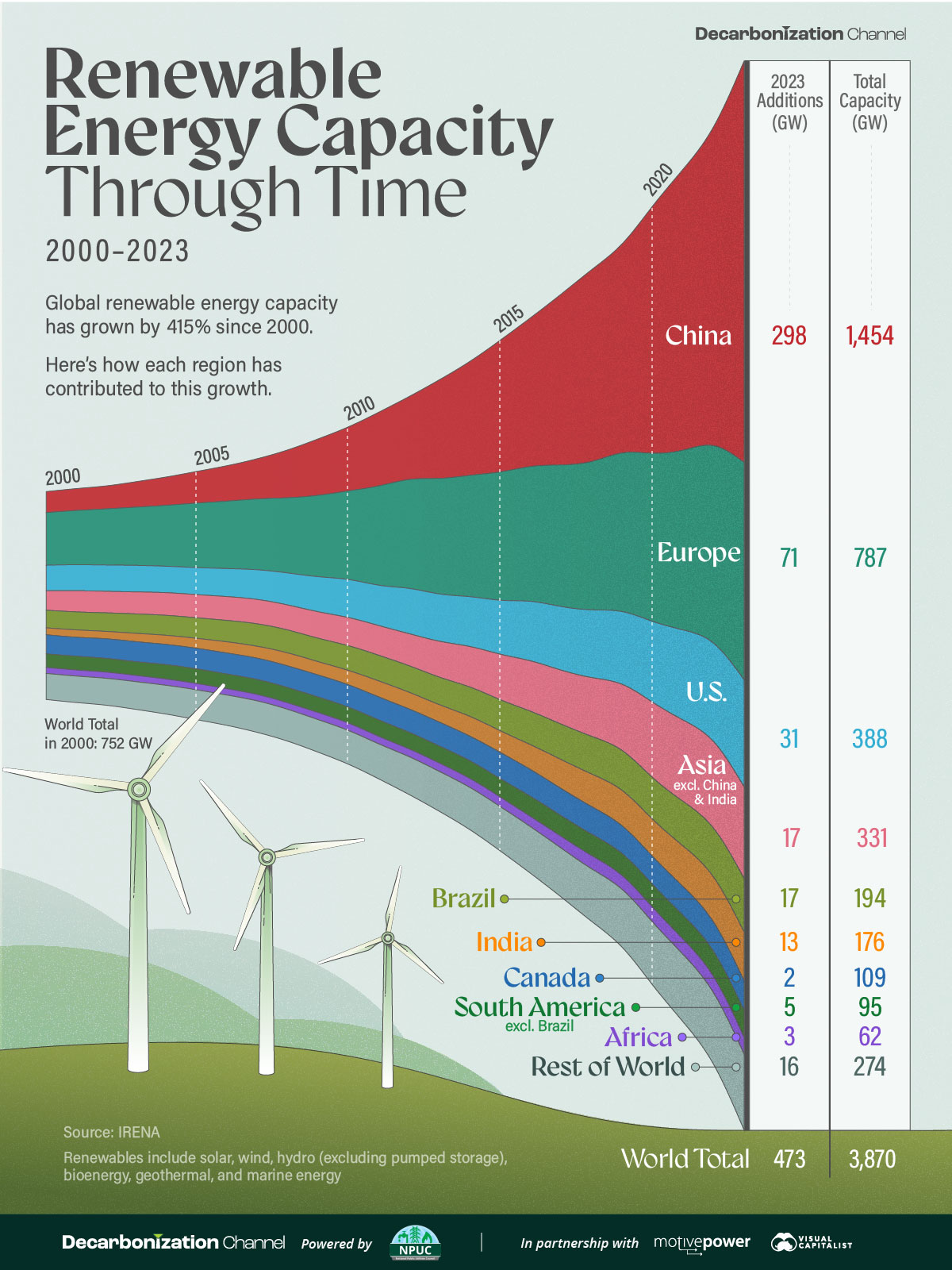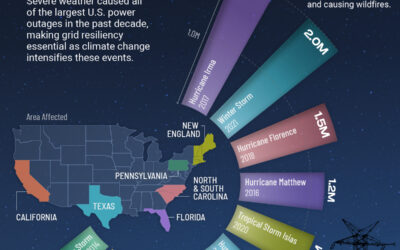Visualized: Renewable Energy Capacity Through Time (2000–2023)
Global renewable energy capacity has grown by 415% since 2000, or a compound annual growth rate (CAGR) of 7.4%.
However, many large and wealthy regions, including the United States and Europe, maintain a lower average annual renewable capacity growth.
This chart, created in partnership with the National Public Utilities Council, shows how each world region has contributed to the growth in renewable energy capacity since 2000, using the latest data release from the International Renewable Energy Agency (IRENA).
Renewable Energy Trends in Developed Economies
Between 2000 and 2023, global renewable capacity increased from 0.8 to 3.9 TW. This was led by China, which added 1.4 TW, more than Africa, Europe, and North America combined. Renewable energy here includes solar, wind, hydro (excluding pumped storage), bioenergy, geothermal, and marine energy.
During this period, capacity growth in the U.S. has been slightly faster than what’s been seen in Europe, but much slower than in China. However, U.S. renewable growth is expected to accelerate due to the recent implementation of the Inflation Reduction Act.
Overall, Asia has shown the greatest regional growth, with China being the standout country in the continent.
It’s worth noting that Canada has fared significantly worse than the rest of the developed world since 2000 when it comes to renewable capacity additions. Between 2000 and 2023, the country’s renewable capacity grew only by 57%.
Trends in Developing Economies
Africa’s renewable capacity has grown by 184% since 2000 with a CAGR of 4%.
India is now the most populous country on the planet, and its renewable capacity is also rapidly growing. From 2000–2023, it grew by 604%, or a CAGR of 8%.
It is worth remembering that energy capacity is not always equivalent to power generation. This is especially the case for intermittent sources of energy, such as solar and wind, which depend on natural phenomena.
Despite the widespread growth of renewable energy worldwide, IRENA emphasizes that global renewable generation capacity must triple from its 2023 levels by 2030 to meet the ambitious targets set by the Paris Agreement.
Learn more about how electric utilities and the power sector can lead on the path toward decarbonization here.





